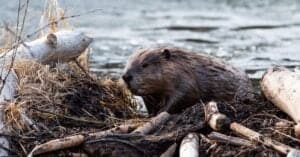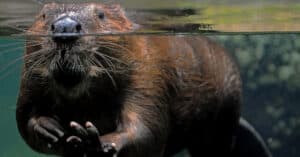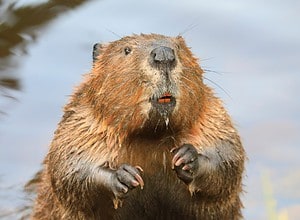Imagine hiking near a tranquil river or exploring the lush forests of North America or Europe. You stumble upon a group of furry, industrious creatures busily building dams and lodges. These animals are none other than beavers, and they are known for their remarkable engineering skills. So, what do we call a group of beavers? A group of beavers is called a colony.
This blog post will delve into the fascinating world of beaver colonies and their social structure and behaviors.
Beaver Colonies: All in the Family
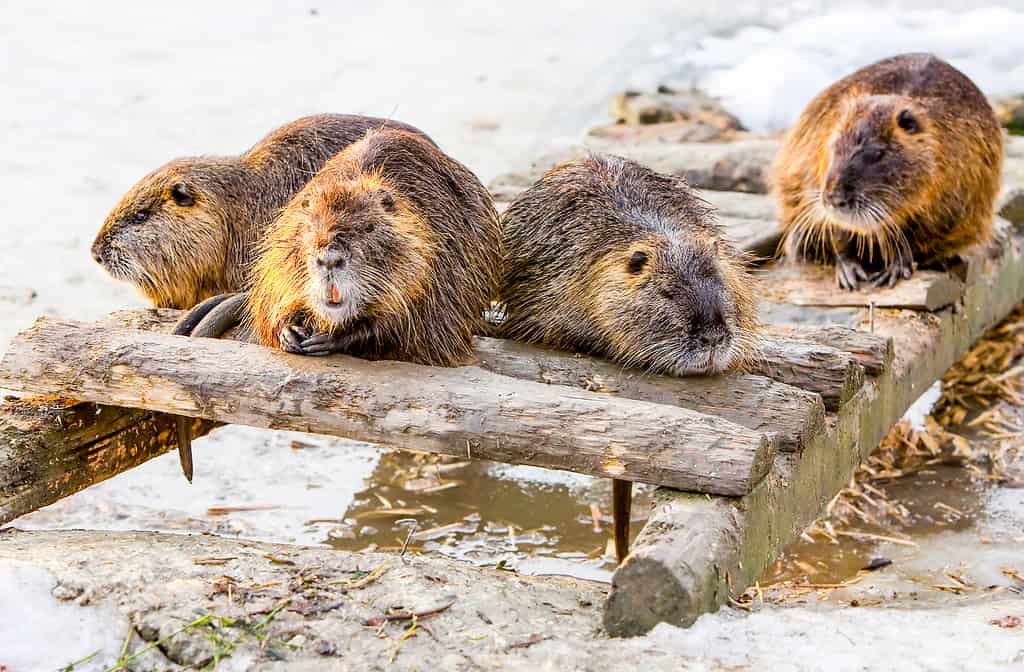
Beavers form colonies as part of their regular life. In fact, they are highly social and cooperative.
©Ammit Jack/Shutterstock.com
Beavers are highly social animals whose colonies consist of close family members. A beaver colony consists of a mated pair, their offspring, and sometimes even extended family members, such as siblings or other relatives. These tight-knit families work together to build and maintain impressive structures.
Beaver families exhibit strong bonds and cooperate in various tasks, including foraging, grooming, and caring for the young. The offspring, called kits, usually stay with their parents for about two years, then venture off to find their mates and establish new colonies. The parents continue to reproduce and care for their new kits, ensuring the survival and growth of the colony.
Do Male Beavers Live in Herds?
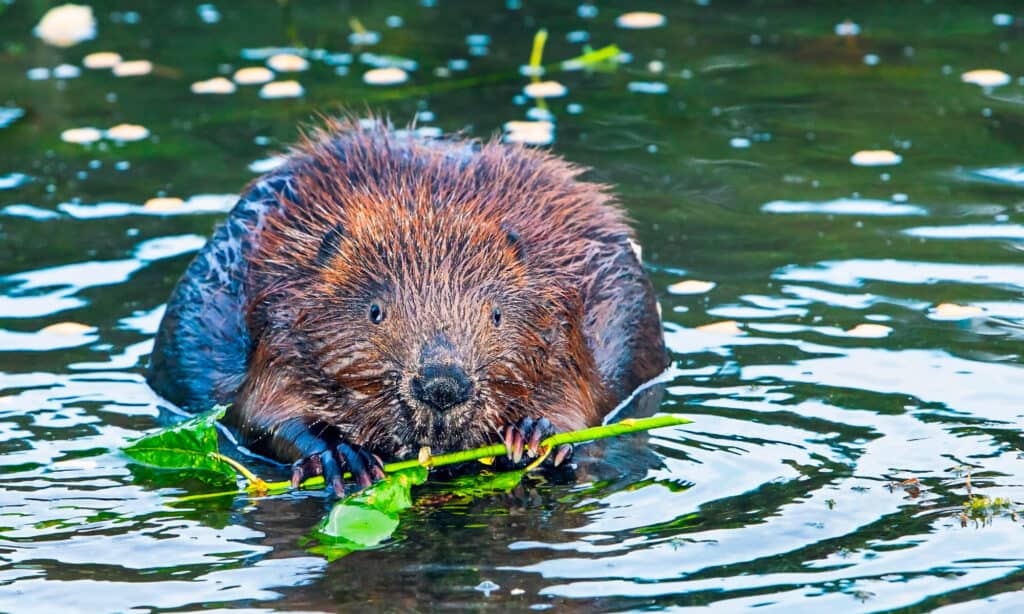
Since every member of a beaver colony plays an important role, males do not form separate herds.
©SERGEI BRIK/Shutterstock.com
In the world of beavers, both males and females play an essential role in maintaining the colony. Unlike some other mammals, where males might form separate herds or bachelor groups, male beavers are involved in family life and the daily activities of the colony.
Male beavers, or boars, collaborate with their female counterparts, sows, to construct and preserve their intricate structures. They also help protect the colony from threats like predators or rival beavers. In addition to these duties, male beavers play an active role in raising their offspring, providing a nurturing environment for the young kits to grow and learn.
So, to answer the question, male beavers do not live in separate herds; instead, they are an integral part of the family unit and the overall success of the beaver colony.
How Many Beavers Live in an Average Colony?
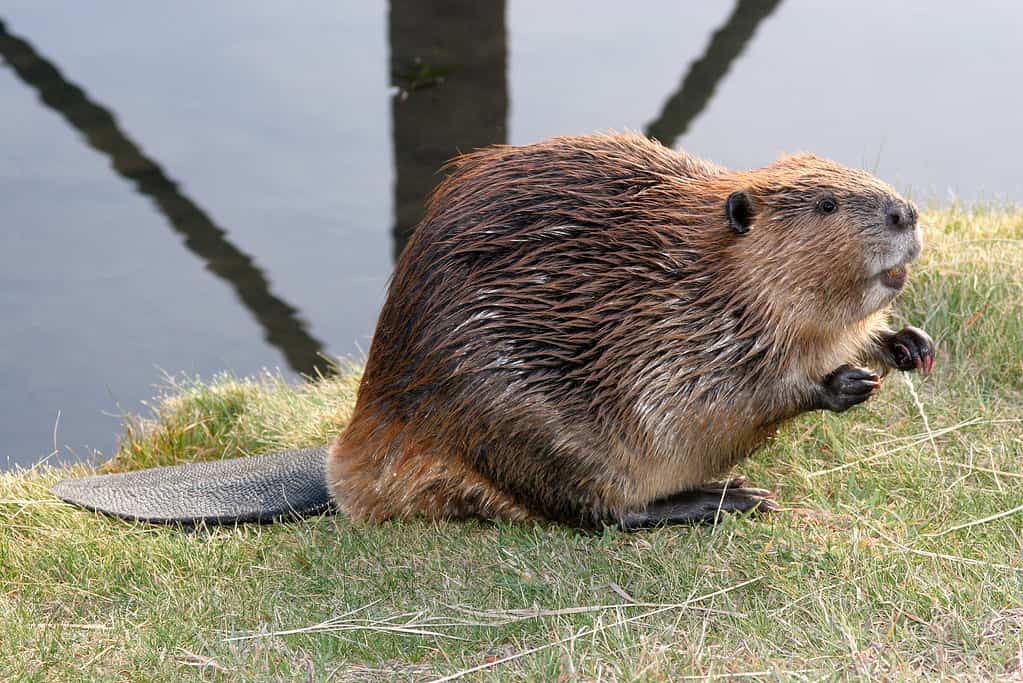
While it can vary, beaver colonies can range between two and 12 individuals.
©iStock.com/webmink
The size of a beaver colony can vary greatly depending on factors such as available resources, habitat, and beaver population density. A beaver colony may consist of anywhere between two to 12 individuals. The colony usually consists of a mated pair, their offspring from the current year, and offspring from previous years.
Beaver Colonies and Ecosystem Engineering
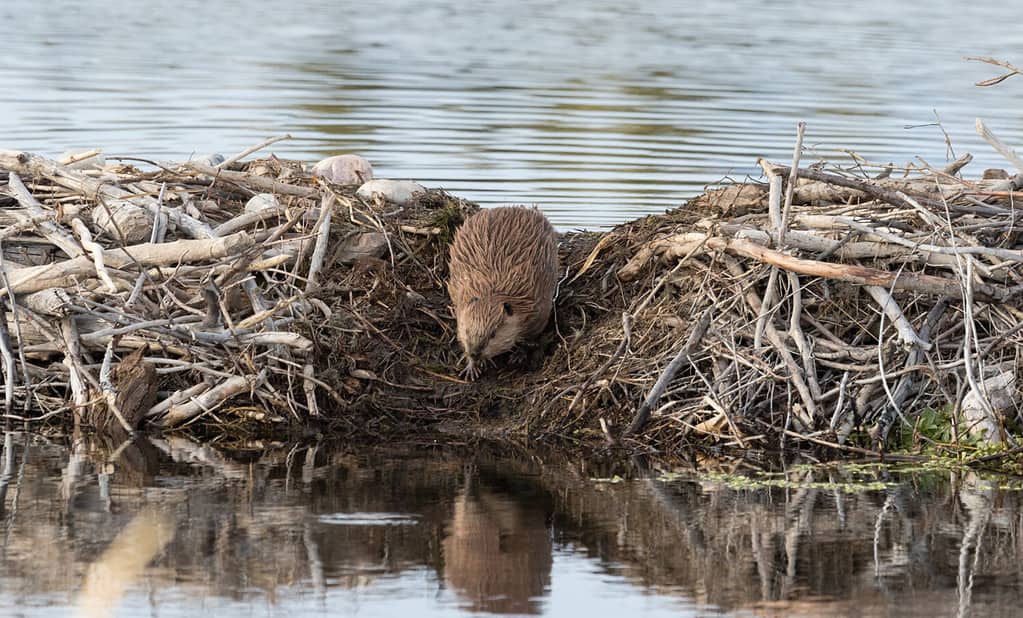
With the dams they construct, beavers create ponds and wetland areas that support other animals and plants.
©Ronnie Howard/Shutterstock.com
An essential aspect of beaver colonies that deserves further exploration is their incredible impact on the ecosystems they inhabit. Beavers are classified as “ecosystem engineers” because they can modify their environment to suit their needs. By constructing dams, beavers create ponds and wetlands that support a diverse range of plant and animal species.
These newly created wetlands provide a habitat for various fish, amphibians, birds, and other mammals, leading to increased biodiversity in the area. Additionally, beaver ponds help regulate water flow, reduce erosion, and improve water quality by filtering out pollutants and sediments. This makes beaver colonies an essential component of a healthy ecosystem.
How Large is a Beaver’s Territory?

The size of beaver dams will vary, some may be slightly under 60 inches high to an incredible 78 inches high.
©marekuliasz/ via Getty Images
A beaver’s home, or territory, can vary depending on a few factors. Where they decide to build, whether it’s on a shore or on the banks of a river, they will choose a location that is dependent upon the availability of food in the winter and the size of the beaver population surrounding the area. Their range can vary between smaller, less than half a mile (0.30), or rather large, around 13 miles. The average size is closer to slightly under two miles.
Once they choose their territory, the size of their dams will vary, some may be slightly under 60 inches high to an incredible 78 inches high. Depending on where they’ve chosen, their homes may be comprised of tunnels and burrows instead of dams, which, if they find an area with more food, they will abandon and rebuild.
Beaver Communication and Cooperation Within Colonies

With vocalizations, body language, and even scent marking, beavers have complex methods of communication.
©iStock.com/TatianaMironenko
Another fascinating aspect of beaver colonies is their complex communication and cooperation methods. Beavers use a combination of vocalizations, body language, and scent marking to communicate with each other. One well-known form of beaver communication is tail slapping. When a beaver senses danger, it will forcefully slap its tail on the water’s surface. This creates a loud noise that serves as a warning signal to other colony members.
Beavers also communicate using scent mounds, piles of mud, and vegetation mixed with their castoreum, a secretion from their scent glands. These mounds help define the colony’s territory and convey information about the individual beaver that created the mound, such as age, sex, and reproductive status.
Cooperation within a beaver colony is critical for the group’s survival. Beavers work together to build and maintain their dams and lodges, often sharing the workload and utilizing their unique skills. For example, while one beaver may be adept at cutting down trees, another may excel at moving logs and branches to the construction site. This collaboration ensures the efficiency and success of their engineering endeavors.
Conclusion
Beavers exhibit a fascinating social structure centered around family groups and cooperation. A group of beavers is called a colony, and these colonies are made up of close-knit family members working together to create and maintain their intricate and vital ecosystems. Both male and female beavers play essential roles in building and preserving impressive structures, such as dams and lodges, and raising their offspring.
The photo featured at the top of this post is © Ammit Jack/Shutterstock.com
Thank you for reading! Have some feedback for us? Contact the AZ Animals editorial team.



